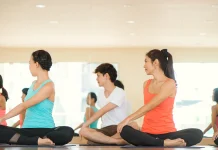We all know the health risks of smoking. It is even printed in each cigarette box that you purchase in Indonesia. But, that doesn’t make it any easier to kick the habit. Whether you’re a teen smoker or a lifetime pack-a-day smoker, quitting can be really tough.
Smoking tobacco is both a physical addiction and a psychological habit. The nicotine from cigarettes is a chemical that makes you addicted to smoking. Over time, your body gets used to having nicotine. When your body doesn’t get nicotine, you may feel uncomfortable and crave cigarettes.

However it does not mean that quitting smoking is impossible. The first thing that you need to do is make a commitment. Making that commitment is half the battle.
Take the time to think of what kind of smoker you are, which moments of your life call for a cigarette, and why.
- Is it a very bad addiction (more than a pack a day)? Or are you more of a social smoker?
- Are there certain activities, places, or people you associate with smoking? Do you feel necessary to have a cigarette every time after you have a meal? Or do you always smoke when you hang out with your colleagues?
- Do you reach for cigarettes when you’re feeling stressed or down? Or is your cigarette smoking linked to other addictions, such as alcohol or gambling?
Then consider how you want to change your habit and leave smoking for good:
Cold turkey (no outside help)
About 90% of people who try to quit smoking do it without outside support–no aids, therapy, or medicine. Although most people try to quit this way, it’s not the most effective or successful method.
Behavioral therapy
This involves working with a counselor to find ways not to smoke. Together, you’ll find your triggers (such as emotions or situations that make you want to smoke) and make a plan to get through the cravings.
Nicotine replacement therapy
Nicotine gum, patches, inhalers, sprays and lozenges are nicotine replacement therapies. They work by giving you nicotine without the use of tobacco. You may be more likely to quit with nicotine replacement therapy, but it works best when combined with behavioral therapy and lots of support from friends and family. And remember that the goal is to end your addiction to nicotine, not simply to quit using tobacco.
Medication
Bupropion (Zyban) and varenicline (Chantix) are prescription medications that can help with your cravings and symptoms from withdrawals.
Combo treatments
Using a combination of treatment methods might increase your chances of quitting. For example, using both a nicotine patch and gum may be better than a patch alone. Other combination treatments that are helpful include behavioral therapy and nicotine replacement therapy; prescription medication used together a nicotine replacement therapy patch; and a nicotine replacement therapy patch and nicotine spray.
In your effort to quit, it is normal to feel like you crave for some nicotine. It won’t go away in the first few days, and you have to adjust yourself with the new habit. Once you stop smoking you will also experience a number of physical symptoms as your body withdraws from nicotine, such as irritability, anxiety, difficulty concentrating, restlessness, decreased heart rate, and even insomnia.
You can manage your cigarette cravings by:
- Distracting yourself by doing other things such as watching your favorite movie, doing the dishes, taking a shower, or calling a friend.
- Reminding yourself why you quit.
- Getting out of a tempting situation.
- Rewarding yourself when you triumphed over a craving.




